Community is about: ©
- a place of belonging, sharing and caring
- each individual feeling valued and understood; celebrating diversity; people being appreciated as unique within the greater whole
- inclusiveness and cherishing every part of the whole; opening a door to the wider world; recognising and appreciating our interdependence; actively seeking to include others
- relationships based on mutual respect, listening and open communication
- conflict being recognised and worked through creatively; forgiveness; hurts being healed, letting go of resentments
- co-operating one with another to achieve more than any individuals could achieve
- sharing resources, responsibilities, endeavours, values, visions, feelings, histories and cultures
- living, learning, loving, growing, developing and changing individually and collectively
- a safe place and a challenging place where each person can contribute, use their gifts and be fulfilled
Community exists where there is a deep sense of well-being, where each person and group feels valued and has a sense of belonging. Each is able to be most fully themselves whilst, paradoxically, being part of a greater whole. A community might be the family, friends, class, school, neighbourhood, a group of endeavour, a faith group, a country, the world….
The word ‘community’ is sometimes used to mean ‘a group of people with something in common’. But such a group might be overtly racist or sexist, or oppressive, exclusive and threatening. It would not necessarily display the characteristics of true community as we are using the term in Values and Visions. Attaining community, as we are defining it, is a tall order but it can be done! Schools do indeed exist where there is this quality of community, and if they did not exist we would need to imagine them and create them.
There are four skills that are crucial to creating a sense of community. These are affirmation, communication, cooperation and conflict resolution. With the global and planetary challenges facing us, these skills are vital if schools are to prepare students not only for the world in which we now live, but for an unknown and increasingly unpredictable, fast-changing future. There are countless excellent activities and resources that are designed to develop these skills. This chapter presents a small introductory selection.
We focus on activities for creating community where we are – within school. The activities themselves will only be effective if the structures and the ethos of the school support and nourish the activities for building the sense of community
All forms of discrimination – whether based on gender, race, disability, or any other prejudice – bring division, limitation and conflict to a school and bar the possibility of real community. Sustained strategies for breaking down barriers are essential groundwork for developing a spirit of community.
Community is obviously not limited to school; in its broadest sense community is our one world. Beginning where we are, knowing in an everyday way what community is about, grounds the vision of one world, one community.
Inter-communal and intra-communal misunderstanding and strife are ever-increasing. Challenges to communities to change and accommodate new groups of people are multiplying as climate change and war affects entire regions. Our ability to create and be members of inclusive, harmonious communities has become something that is crucial to the wellbeing of our schools, our society and our world. Now, more than ever before, young people need the strength and confidence that true community can bring.
| “The lack of community is so much the norm in our society, one without experience would be tempted to think: ‘How could we possibly get there from here?’ It is possible. Remember that to the uninitiated eye it would seem impossible for a stone ever to become a gem.”
M Scott Peck |
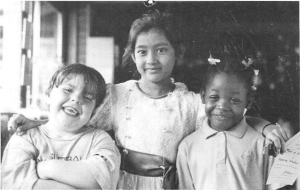
| “No man is an island, entire of itself; every man is a piece of the continent, a part of the main.”
John Donne |
Circle time ©

| V&V This activity is about the here and now. It involves listening, reflecting on experience, taking responsibility and acting on it; encouraging us to recognise that suffering and joy are experiences common to all. |
What are you doing now?
- You may be concerned with registration time; the end of the day or week; activities for indoor breaks, advisory or form time; circle discussions
- With adults you may be looking for ways to end your governors’ meetings or staff meetings in a positive affirming way.
You need a magic microphone. A magic microphone is any object, perhaps a stone or a shell, which can be held by the speaker to indicate it is their turn, or opportunity, to speak. When they have finished speaking they place the magic microphone back into the centre of the circle, or pass it to whoever indicates they want it.
You might like to try
- Everyone sits in a circle and reviews the day or the week. Each speaks in turn, with no interruption. The use of a magic microphone will help here. Each says, “one thing I have enjoyed this week is…” and also perhaps “something I found hard was…”. This is a time for each person to be heard. Notice that people use ‘I’ statements. There is no elaboration, discussion or comment at this stage. Anyone who wants to ‘pass’ in the circle should be free to do so.
- After everyone has spoken (or passed) the teacher asks the students to sit quietly for a moment and to think about
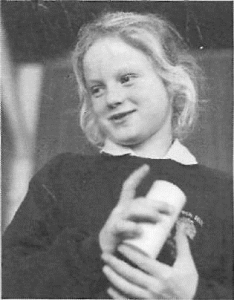 some of the different things that have brought pleasure or pain to them and to others during the week. It may be appropriate for the activity to finish there on reflection, or it could move on to action.
some of the different things that have brought pleasure or pain to them and to others during the week. It may be appropriate for the activity to finish there on reflection, or it could move on to action.
- On a large sheet jot down the things that have been enjoyed and the things that people didn’t like. What action might the class want to take to minimize the things that people don’t like? For example, if the comment ‘boys won’t let us play football’ was something that came up can the class agree to listen to the girls and look at ways to include them?
Comment ©
Circle time is a very powerful classroom activity which enables all those involved, adults and students, to explore feelings, emotions, relationships and self-awareness in a safe, non-judgemental environment with opportunities to share sadness and joy, silence and reflection, celebration and fun. All the members of the circle need to be assured that they are able to ‘pass’ on any activity that they feel unready to participate in. All are equally valued and listened to, and all agree to a few simple ground rules to enable the group to work well. These rules could include: listening with two ears, two eyes and an open heart; no comment, no interruption; keep it brief; and no blaming.
As the teacher and pupils become more secure with circle work they will begin to appreciate all that it has to offer in a democratic, listening and caring community. It is likely to become a central part of the life of the class, and ideally the whole school community.
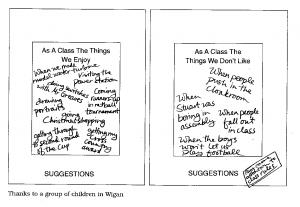 Link to…
Link to…
| “I am dubious as to how far we can move toward global community – which is the only way to achieve international peace – until we learn the basic principles of community in our own individual lives and personal spheres of influence.”
M Scott Peck |
Guided Fantasy – visiting an imaginary school ©
| V&V This activity is about finding a shared vision; taking action based on one’s vision; using creativity to bring about what you value. |
What are you doing now?
- With staff, governors, parents or students you may be trying to find common ground and a shared vision.
- Within the curriculum you may be doing design or technology, identifying needs within the school.
- In Art you may be examining your immediate locality.
- In PSMH you may be looking at how we live together.
- In English / Language and Literature you may be working on describing the setting for a story (this is an excellent teaching activity – see the notes following the script.)
You might like to try
- Ask the group to sit in a circle. Explain that in a moment, you are going to invite them on an imaginary journey to visit a very interesting place.
- Ask them to sit comfortably, their feet on the ground, to close their eyes, to relax and to become quiet. Ask them to become aware of their breathing.
- When everyone appears to be settled, read or adapt and invent a text similar to the one below. Take it slowly, giving people time and space to imagine as you go along.
- When they open their eyes ask them to quietly, in stillness, jot down in their notebooks all they have seen and heard and felt.
- Gently feed back as a whole group, without comment, all they saw, heard, touched and sensed and what was the most important thing that they saw. Write these up under an umbrella (see example on next page).
- Ask people to identify:
- those elements they already have. Ring these in one colour.
- those elements they can, with other students or colleagues, create. Ring these in different colour.
- Encourage them to look at the umbrella in front of them and ask them what they notice. Most groups will note how much is indeed possible.Ask people to reflect individually on, and jot down in their journals:
- what one element in the future school they most value;
- what they want to create;
- what they will create.
- Ask people to share these with a partner. Any main points that have emerged are shared with the whole group and captured.
- Ask people to begin planning for action; to write down what they will do, with whom, by when, in order to create what they want in the school.
- Ask them to share the commitments in pairs and then to choose one element to share in the whole group.
- Ask them to find a partner, a buddy, who will support them in their commitment, i.e. will give encouragement and enquire on progress over a period of time.
- Write up the commitments as a group and agree when you will review how these actions are progressing and set a date and time and place. The “Ways Forward Matrix” is a good way to do this.
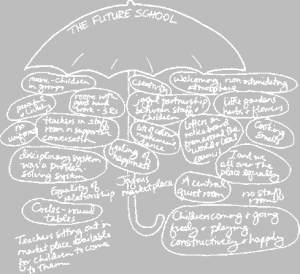
Alternative uses
In Language & Literature or creative writing this activity can be used to guide the students on a journey to the setting of a story or memoir they are going to write. As they come out of the fantasy, ask them to write in silence all they have seen and heard. In that case, you skip steps 5 -13. This is very effective for personal writing.
Guided Fantasy – script ©
I want you to imagine you are somewhere where you feel at peace. Choose the place you want to be. What can you see?… What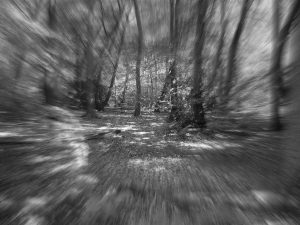 can you feel?… As you look I want you to imagine that you can see in the distance a path that leads up a hillside towards some trees… Imagine you are walking along this path… There are fields on either side of you…
can you feel?… As you look I want you to imagine that you can see in the distance a path that leads up a hillside towards some trees… Imagine you are walking along this path… There are fields on either side of you…
The sun is shining… there is the sound of birds and insects…
As you get nearer to the trees you see the path leading into the woodland… Please follow the path… The sun is falling through the leaves and branches making patterns of light and shadow on the ground in front of you… Walk along a little further until you reach another path that crosses yours…
Here you see a signpost and on it is written ‘School of the Future’. [See note below]
Please turn down that path… You may have to walk a long way… You are now approaching the school… The school that you are going to see is in the year ___ [name a year 10 years in the future]; it has been working for many years on values; it is an ideal and peaceful school. You are now going to visit this school, see the students, the women and the men learning and teaching there.
You are approaching the school now… What can you see?… Go right into the school… What can you hear?… What can you smell?… What can you see?… Touch a few things…
You can see the students and teachers now… What are they doing?… Can you see their faces?… Their hands?…
Perhaps some of them are talking… Go over and listen……What can you see?… Can you see their faces?….. their hands?
Leave that group that you were listening to and wander through the school for a few moments and look at the students as you go… Who are the other people that you see?… Touch the books and things that students and adults will be using… Have a good look around… What is it like in this place?… What sort of feelings do you have?… What is the most important thing that you have seen?… Have a last look around now because soon you will be leaving…
In a moment I want you to gently open your eyes, wriggle your toes and find yourselves back here _______ [give the date and place]… When you are ready, please open your eyes.
[Note: You can adapt this script as necessary for use with another type of community. For example you might say ‘neighbourhood’ instead of ‘school’, ‘streets’ instead of ‘classroom’, and so on. This will need to be applied to other phrases in the script.]
Comment ©
This activity has been frequently used with adults but can easily be adapted to explore specific curriculum concerns with students.
Often people are surprised to find that their ideal school of the future is simply made up of many very readily achievable elements – Utopia is not something great and incredible but something quite wonderfully ordinary and well within the bounds of possibility. The activity is about visualising, analysing, choosing, deciding and making a commitment to action. The real challenge is the follow through on action. For school teachers whose lives may well be overcrowded and bursting at the seams, it obviously helps if we tackle tasks in twos and threes to support one another, to listen to one another and be accountable to one another. Obvious though it may be, it is often overlooked that it is much easier to do something as a pair or small group than to try to do it alone. Too often isolated individuals strive to achieve what two or three could do swiftly and enjoyably. So invite people to buddy up, to coach, encourage and support each other in implementing the small steps to bring their vision to life. The power of co-operation cannot be over-estimated.
| Your Special Place
Guided Fantasy can be used for creative purposes. In the last few years I have used it with students about to write a short story or memoir. The word ‘school’ is replaced by ‘your special place’ or similar as appropriate. I find that the silence and stillness really helps the students go inside themselves to that place. Maintaining that silence and stillness as they emerge from the fantasy is vital. Before embarking on the script, I ask them to set out writing implements so that they can start writing as soon as they “come back”. As I am closing the script, I change my voice to a more normal tone and volume and say that when they open their eyes they will be back in the classroom. In silence they should go to their paper, tablet or computer and write down everything they have just seen, heard, smelled etc. They are usually engrossed for the next ten to twenty minutes and emerge excited and energised by what they have “seen”. Superb descriptions of setting in their short stories or memoirs result from this in-depth, personal exploration.
Teacher, Oman |
| “I invite you to step out of your gloom, citizens of the old continent: you have conquered everything and all you have gained is individual isolation. Now it’s your turn to discover and regain for yourselves a sense of community with all humankind.”
Tomas Borge |
Link to…
- Ways Forward Matrix in chapter on VALUES and VISIONS
| “One of the marvellous things about community is that it enables us to welcome and help people in a way we couldn’t as individuals. When we pool our strength and share the work and responsibility, we can welcome many people, even those in deep distress, and perhaps help them find self-confidence and inner healing.”
Jean Vanier, Community And Growth |
Today’s world is… ©
| V&V This activity is about the here and now; issues of justice, peace and the environment in the wider world; reflection; shared values and visions. |
What are you doing now?
- You may be meeting with parents, governors and teachers in order to clarify values and priorities in the school.
- You may be working with students on values in Language, PSMH, advisory time or environmental studies.
- You may be working on career choices in advisory or form time.
You might like to try
This invites us to relate what we do in school to what concerns us in our world.
- Ask people to make themselves comfortable and to sit quietly for a moment, to take a few gentle breaths and allow themselves to become still and then to reflect on our world today – what are the words and images that spring to mind?
- As a group, brainstorm single words that describe today’s world. With one person acting as ‘scribe’, group members, including the one doing the writing, call out ideas. There should be no comment or discussion about individual contributions. Limit the activity to a few minutes, depending on when the momentum of ideas dies away.
- Ask people to look at the brainstorm and consider their response to it:
- which three qualities do you or your students want to leave school with?
- which three qualities would best equip you or your students for the world today? Ask them to jot down each quality on a card.
- In pairs look at the qualities, compare and explain why they were chosen, reflect on them and together come up with the one which matters most. List, without comment, for the whole group.
- Some questions you might like to discuss:
- What strikes you about the qualities chosen?
- How do the lists relate to what goes on in school?
- How do the lists relate to the values of the school?
- If the school has a faith position, how do the qualities relate to faith?
- How do you encourage these qualities?
- What do the children / teachers / parents / governors / students / ancillaries want to do now to develop these qualities?
Brainstorm what action is required and invite people to volunteer to take specific actions with the support of a buddy and to report back on a given date.
Comment ©
People are often surprised at how universally shared some human values are. Sometimes teachers imagine parents are only interested in the marks and exam results and sometimes parents imagine teachers don’t share their priorities that their students grow in happiness and love. This activity can break down some of the misconceptions between parents and teachers and bring out the shared values and vision whilst, at the same time. exploring ways of working together towards them.
When I first introduced the idea of Values and Visions to my class of 9-10 year olds I wanted to make sure that I didn’t force my own values on to the students; I wanted them to recognise their values and visions, to put into words what is important to them as individuals rather than their parents’, teachers’ or peers’ views. When we first discussed our “values and visions” we decided to brainstorm things that we felt were important – beliefs, dreams, ideals, wishes for the world, etc… The result was a quite extensive compilation of DOs and DON’Ts. Most ideas were preceded by ‘Don’t’, ‘Save’, ‘Stop’. ‘More’, ‘No’. For example:
| Don’t kill animals
Stop dictators
Don ‘t treat people as though they are a piece of dirt
More schools
Less illness
Stop smoking
Stop hunting |
Save paper
Don ‘t waste
Stop cruelty to animals
Save the -world
Stop weapons
Stop polluting
End homeless
Save animals
Stop sexism |
Stop bombing
Respect belongings and other people’s things
Help the -world
Help at home
Save paper
Don’t waste |
We decided to concentrate on the positive phrases so we turned the negatives on their heads and made them into positive solutions. We homed in on three statements focussed on ‘Help’, ‘Save’ and ‘Respect’.
Each day as the students left school I asked them the questions “Helped? Saved? Respected?” and each child had to say one thing they had done to help, save or respect during the day.
Teacher, Trafford |
| ‘Community means caring: caring for people.’
Dietrich Bonhoeffer |
Link to…
- Putting Your Values to Work In chapter on PURPOSE and ACTION
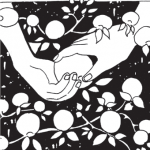 Which community ? ©
Which community ? ©
| V&V This activity begins to look at cultural diversity and unity and the whole notion of what is a community. It develops a sense of self, in terms of ‘who am I in relation to the community?’. |
What are you doing now?
- You may be doing some practical Maths with work on sets.
- You may be studying your locality in Geography.
- You may be starting to study a novel on gangs or groups such as
“The Outsiders” ( Hinton, 1967)
You might like to try
This is an activity which highlights the fact that we are each part of many different overlapping communities; that community is complex and may be defined in terms of geography, faith, culture, endeavour, interest, lifestyle etc.
- Ask the students to move physically into sets. For example, all those who live in a village in one set, all those who live in a town in another set, and all those in between or not sure in a third set. Other possible sets might include the following at the teacher’s discretion:
- those who speak/do not speak more than one language;
- those who watch/do not watch football
- cyclists/non-cyclists;
- those who play/do not play sport, music;
- those who are concerned/not too concerned about environmental issues;
- girls/boys
- those who have/do not have relatives overseas;
- those who are Muslim, Jewish, Christian, atheist, of no faith etc.
- Ask what other sets could be used and list the different sets identified.
- Some questions you might like to discuss:
- which sets do you regard as communities?
- what do you think makes a set a community?
- Ask the students in pairs to draw Venn diagrams to show which sets, or communities, they themselves are in. (See variation below)
- Some more questions you might like to discuss:
- Are you surprised by the number and variety of communities?
- Which do you really enjoy being a part of? Why?
- Which do you not really enjoy being a part of? Why?
- Think of some people in the communities of which we are part, but who are not in this class.
- Which is/are the most important to you?
- Are there any communities that do not get on well together?
- Why not? What can we do to change this?
- Discussion could be followed with the students painting a composite class mural of the different groups/communities within the class or school.
Variation for step 4. above
Give the students a paper plate each and ask them to decorate it to show the communities of which they are part. They should not put their names on the front of the plate. The plates are displayed and students may like to see how well they know their classmates by guessing who made each one. It can be good to follow this on with what they have learned about each other which they did not know before.
Link to…
- Potatoes, in this chapter, to explore the idea of diversity within community.
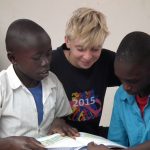
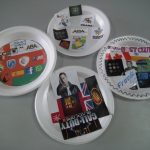
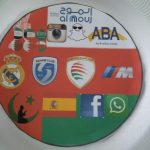
| “What should young people do with their lives today? Many things, obviously. But the most daring thing is to create stable communities in which the terrible disease of loneliness can be cured.”
Kurt Vonnegut |
Potatoes ©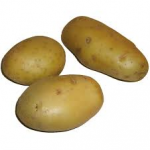
| V&V This activity looks at diversity within a community. It helps us to see that a community is not uniform; rather a group of unique individuals who share certain characteristics. |
What are you doing now?
- In Science, you may working on observational skills.
- In Geography, you might be studying populations
- You may be learning about other faiths.
You might like to try
You will need one potato for each member of the group and a largish bag or small sack to hold the potatoes.
- Sitting in a circle, give each person in the group a potato.
- Ask people to look carefully at their potato and really get to know it well.
- Collect all the potatoes in the bag, give it a shake then empty the potatoes out on to the floor or a table.
- Ask the group to pick out their own potato from the pile.
- Some questions you might want to discuss:
How easy/difficult was it to find your potato?
What made it easy/difficult?
What does this tell you about potatoes?
What can we learn from this about groups of people?
Comment ©
Everyone invariably manages to find their own potato. In debriefing, what really needs to be brought out here is that within a group which shares certain characteristics that make them a group (in this case brown, roundish, knobbly) each individual is nonetheless unique, having qualities which mean it can be identified in a crowd. It is important to remember this when we are thinking about groups of people in different countries, with different belief systems and different cultural backgrounds from our own. (This same exercise is done with leaves in the chapter on Grieving and Letting Go to emphasise the uniqueness of any part of creation.)
Link to… Which Community? in this chapter.
| The Prophecy
There was once a small monastery, a community rather down at heel that was thinking of disbanding. Then one night the abbot had a vision in prayer. The revelation was simple and short – “one of your number is the Messiah”. He shared his vision with the rest of the community. And from that day onwards, things started to change because when each was with another member of the community they would think, “Perhaps this person is the One.” So they began to treat one another with great love and care and respect. When they got up in the morning and looked in the mirror they thought, “Perhaps I am the One” and so they began to treat themselves with great love and care and respect. And so the community began to grow; people from far and wide came to join and soon the community that had been dying came to thrive, grow and prosper. |
| Sense of a Goose
Next fall when you see geese heading south for the winter, flying along in “V” formation, you might consider what science has discovered as to why they fly that way. As each bird flaps its wings, it creates an uplift for the bird immediately following. By flying in “V” formation, the whole flock adds at least 71 percent greater flying range than if each bird flew on its own.
People who share a common direction and sense of community can get where they are going more quickly and easily, because they are traveling on the thrust of one another.
When a goose falls out of formation, it suddenly feels the drag and resistance to trying to go it alone. And quickly gets back into formation to take advantage of the lifting power of the bird in front.
If we have as much sense as a goose, we will stay in formation with those people who are headed the same way we are.
When the head goose gets tired, it rotates back in the wing and another goose takes its place.
It is sensible to take turns doing demanding jobs, whether with people or with geese flying south.
Geese honk from behind to encourage those up front to keep up their speed.
What messages do we give when we honk from behind?
Finally – and this is important – when a goose gets sick or is wounded by gunshot, and falls out of formation, two other geese fall out with that goose and follow it down to lend help and protection. They stay with the fallen goose until it is able to fly or until it dies; and only then do they launch out on their own, or with another formation to catch up with their group.
If we have the sense of a goose, we will stand by each other like that.
Author unknown |



 some of the different things that have brought pleasure or pain to them and to others during the week. It may be appropriate for the activity to finish there on reflection, or it could move on to action.
some of the different things that have brought pleasure or pain to them and to others during the week. It may be appropriate for the activity to finish there on reflection, or it could move on to action. Link to…
Link to…
 can you feel?… As you look I want you to imagine that you can see in the distance a path that leads up a hillside towards some trees… Imagine you are walking along this path… There are fields on either side of you…
can you feel?… As you look I want you to imagine that you can see in the distance a path that leads up a hillside towards some trees… Imagine you are walking along this path… There are fields on either side of you… Which community ? ©
Which community ? © 


